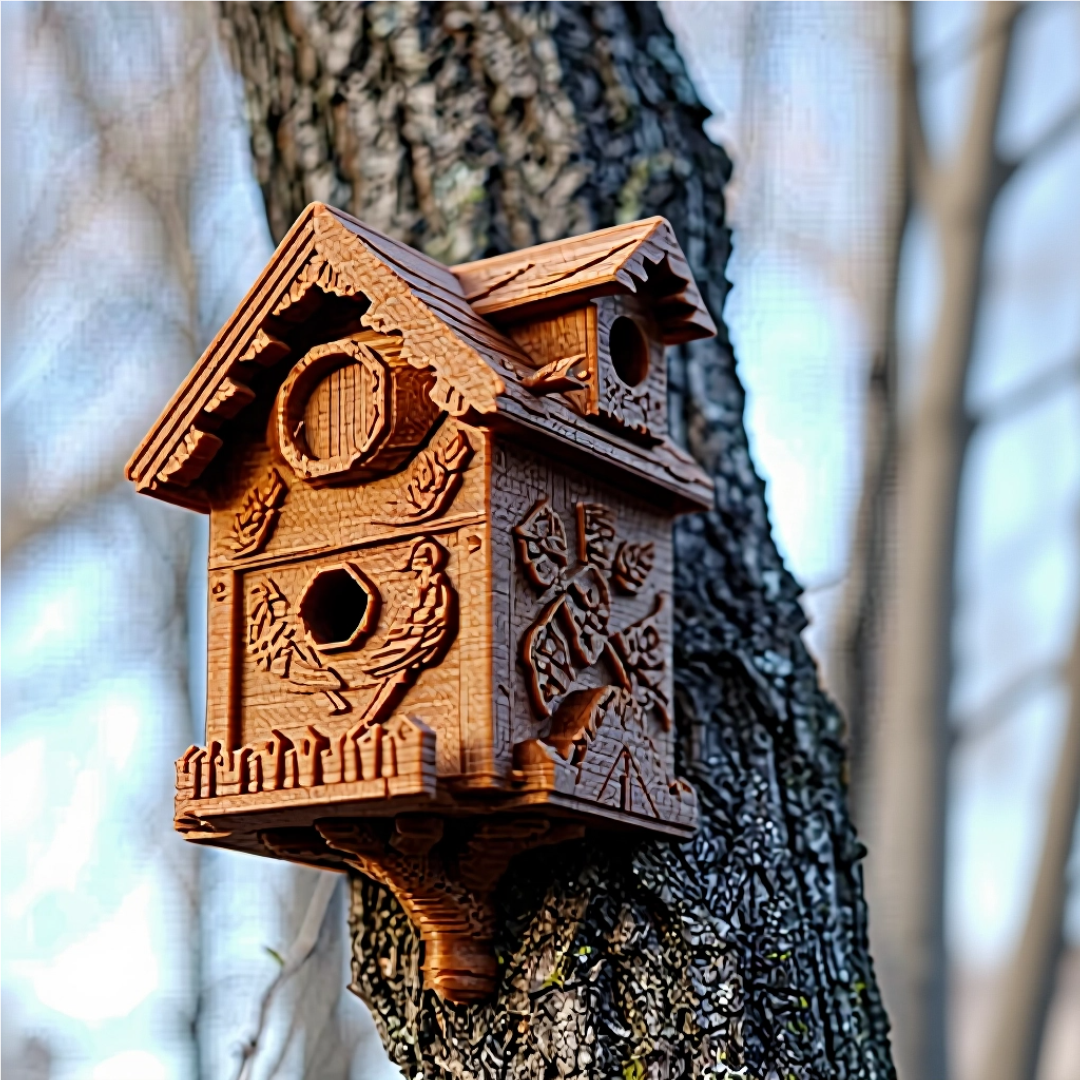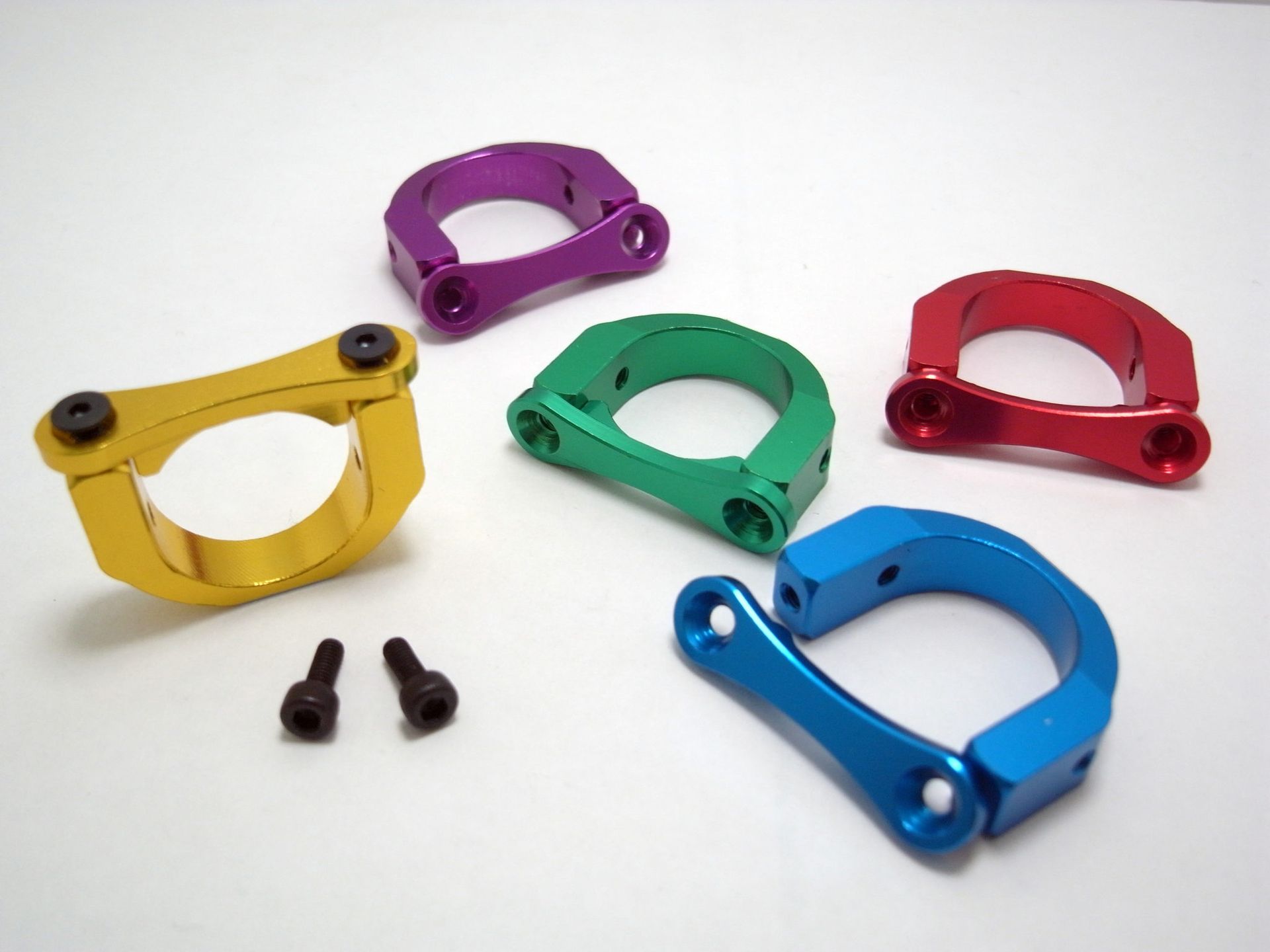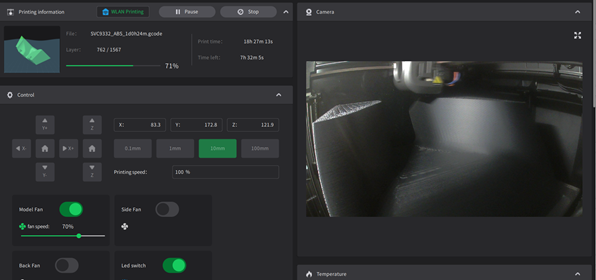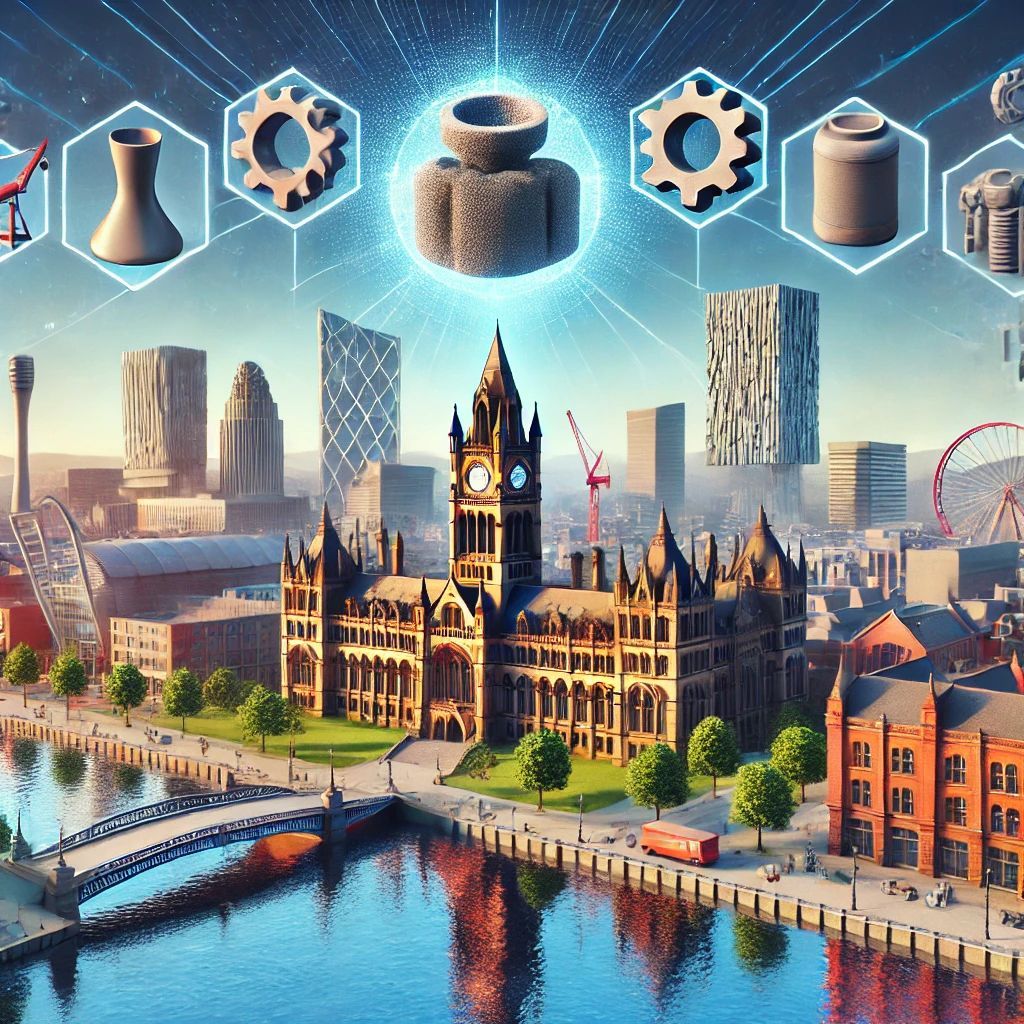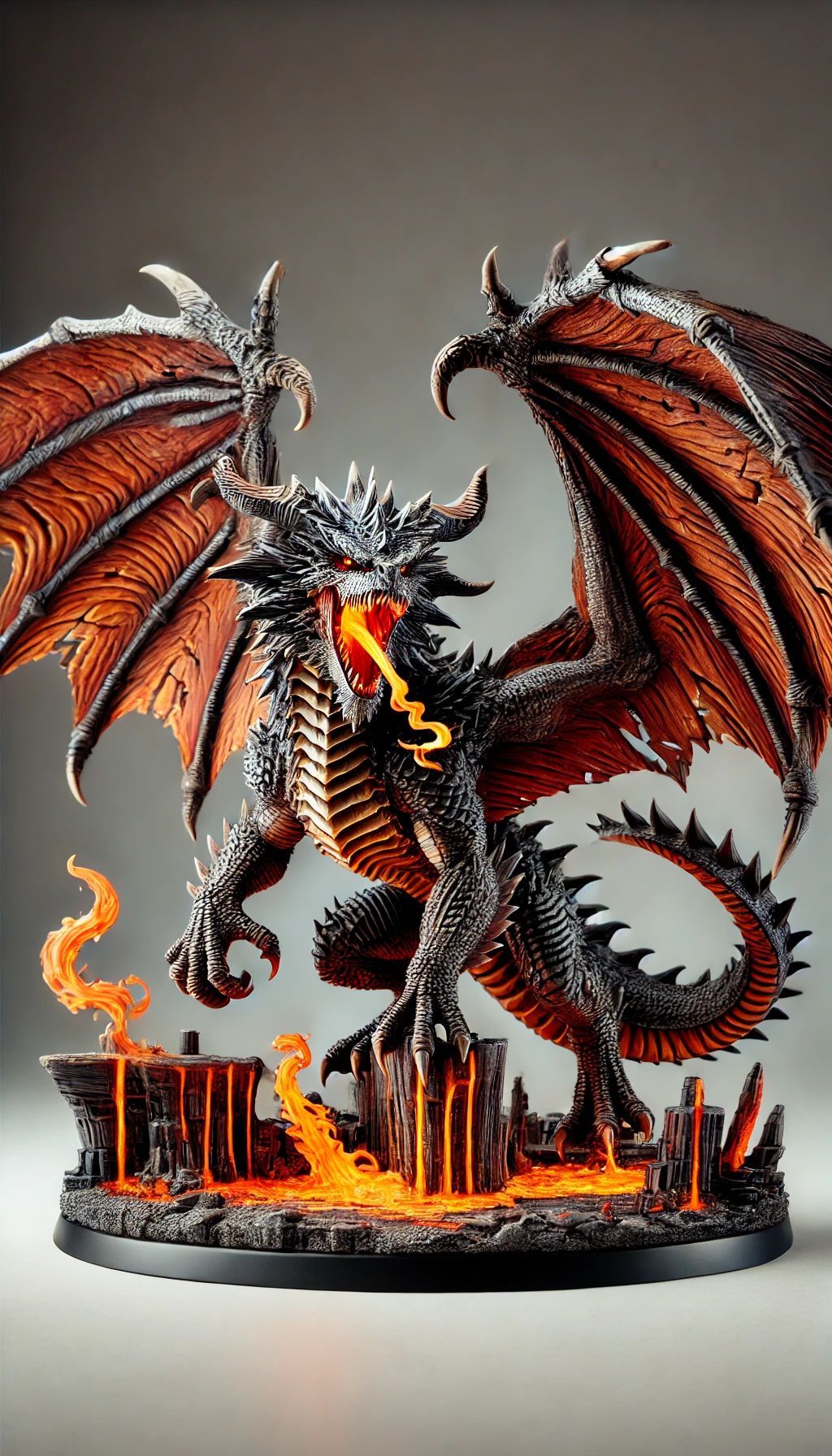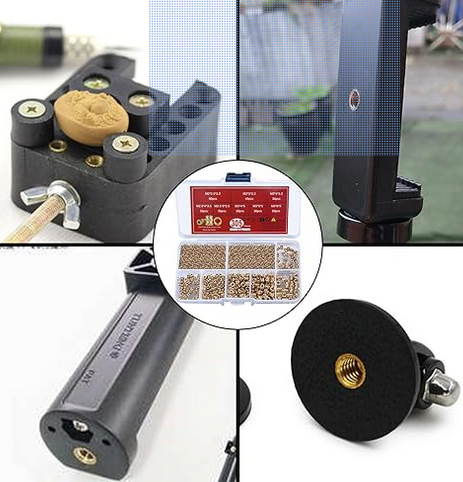3D Print Composite Materials
A Wide range of Plastic and Resin materials used in 3D Printing (Additive Manufacturing)
The List of Composite materials used in 3D Printing is large and seems to be developing very quickly as more is understood of the technology and the demand is growing. Some composite materials that are frequently used in 3D printing are metal, plastic, resin, and PETG filament.
Each composite has its own benefits and drawbacks that make it more or less ideal for certain applications. For example, metal 3D printing is often used for creating prototypes or small batches of parts due to its high accuracy and durability.
However, the cost of metal 3D printers can be prohibitive for some businesses. SLA 3D printing is another option that is often used for creating prototypes or small batches of parts. This type of 3D printing is often used for creating 3D printed car parts or other automotive parts.
Explore Our 3D Printing Materials
Biodegradable and easy to print; ideal for prototypes and models.
Strong and durable; suitable for functional parts and enclosures.
Combines strength and flexibility; great for mechanical components.
High tensile strength and durability; perfect for industrial applications.
Flexible and elastic; ideal for wearable items and phone cases.
Lightweight and corrosion-resistant; used for automotive and aerospace parts.
High strength and corrosion resistance; suitable for medical and food-grade applications.
Exceptional strength-to-weight ratio; used in aerospace and medical implants.
Excellent thermal and electrical conductivity; ideal for heat exchangers and electronics.
Attractive finish and machinability; commonly used for decorative items.
Frequently Asked Questions about 3D Printing with Plastics
List Of Composite Plastics & Resins
- PLA PLASTIC
- PA 12 NYLON
- JEWELERY WAX
- WAX-LIKE RESIN
- ABS PLASTIC
- ASA
- POLYCORBONATE
- TOUGH2000 RESIN
- CASTABLE RESIN
- NYLON
- NYLON + CARBON FIBRE
- CARBON FIBRE
- PLA + CARBON FIBRE
- HIGH TEMERATURE RESIN
- ONYX
- PETG
- PETG + CARBON FIBRE
- Arnite® T AM1210
- HP 3D High Reusability PP
- Ultracur3D® RG 35
....... ASK ABOUT OTHER TYPES OF AVAILABLE MATERIALS
Unique 3D printing materials
3D printing material properties are a major factor in the process of designing 3D printed car parts. The material that a part is built with will determine its final quality and durability. Therefore, it is important to have an understanding of the various 3D printing materials available.
This will help you to understand how each material can be used for specific applications in 3D printing automotive parts.
There are two types of materials used in 3D printing: thermoplastics and thermosets.
Thermoplastics are polymers that soften when heated and harden when cooled. Thermosets are polymers that harden immediately after they have been mixed with a hardening agent.
Thermoplastic resins
Thermoplastic resins are the most common materials used in FDM 3D printing. They are generally inexpensive and easy to obtain, and they come in a wide variety of colors. The most popular thermoplastic resins are ABS (acrylonitrile butadiene styrene) and PLA (polylactic acid). Other resins include polycarbonate, polystyrene, polyvinyl alcohol, and polyvinyl chloride.
ABS is a strong plastic that is hard to melt but easy to extrude. It is often used for mechanical parts because it does not warp when it cools down from the printing temperature.
However, ABS has a low Tg of about 60°C and can deform when it cools down too quickly from the printing temperature of about 200°C.
PLA has a lower strength than ABS but it is easy to print with because it does not warp when cooled. It also has a high Tg of about 100°C, which means that printed objects can be handled immediately after being printed without any risk of deforming or warping due to thermal expansion or shrinkage during cooling.
PLA is made from renewable resources such as corn starch or sugarcane and many people feel that its use is better for the environment than ABS.
Thermosets
Thermosets are used less frequently in FDM 3D printing than thermoplastics because they require higher temperatures during both printing and post-processing; however, they are more durable than thermoplastics and have applications in the aviation and aerospace industries.
These materials include nylon, polyester (PETG), polyurethane, and epoxy.
Nylon
Nylon is a strong material that can be used in both load-bearing and load-supporting components. It has a relatively high Tg of about 220°C, which means that printed objects made with nylon can be handled immediately after printing without any risk of deforming or warping due to thermal expansion or shrinkage during cooling.
Nylon is also resistant to many chemicals and is easy to paint by hand. However, because it has a low Tm (about 105°C), it cannot be melted again once it has been cooled down from printing temperature.
This means that it cannot be post-processed by melting again; instead, you must use an acetone bath to dissolve the parts away from the build platform if they are not sticking well enough for you to remove them cleanly with your hands or with pliers or tweezers.
Combining ABS with nylon gives the benefits of both materials: ABS for strength and nylon for durability without warping when cooled down quickly from printing temperature. The combination is called ABS/nylon composite and can be printed using the same settings as ABS alone.
Polyester
Polyester (PETG) is not suitable for load-bearing parts but it can provide improved toughness over regular ABS when used in load-bearing parts.
It has a Tg of about 90°C, which means that it is much easier to post-process than ABS and can be easily melted again after printing. It also has a slightly lower shrinkage rate than ABS and is therefore more suitable for printing large parts.
However, it tends to be more brittle than ABS and is less resistant to chemicals than nylon, so it may not be suitable for parts that will be in contact with some chemicals or liquids.
Polylactic acid (PLA)
Polylactic acid (PLA) is the most popular material used by 3D printers because it generally prints well on all types of 3D printer. PLA has a low Tg (about 60°C), so it deforms and warps very little when cooled down from printing temperature, which means that you can print many small objects without worrying about warping problems.
PLA also shrinks less during cooling than other materials and can therefore print large objects with little or no warping problems. In fact, you can print objects as large as you like with PLA because they do not need support material to hold them up while they cool down from printing temperature like other materials do; instead, they use a raft to get started on the build platform before sinking into the surface of the build platform as they cool down from printing temperature.
However, even though PLA does not warp much when cooled down quickly from printing temperature, it does tend to shrink quite a bit when cooled down slowly from printing temperature, which can cause problems for large, tall objects. To avoid this problem, many 3D printer operators use a fan to cool down the build platform after they have finished printing an object.
Poly(ethylene terephthalate) (PET)
Poly(ethylene terephthalate) (PET), commonly known as PET or polyester, is used by some 3D printers because it prints easily at lower temperatures than other materials; it also prints well on a wide range of build platforms. Like PLA and ABS, PET has a low Tg (about 50°C); however, it is more resistant to heat than PLA and can be heated up to about 230°C without breaking down or warping too much.
Because of this property, PET is often used with heated build platforms in order to improve adhesion between the layer being built and the layer below it.
ABS
Acrylonitrile butadiene styrene (ABS) plastic is a very common material used by 3D printers because it prints easily using extrusion-based printers at high temperatures that are higher than that of PLA or PET plastic. ABS has a high Tg (about 110°C), so it tends to warp quite a bit when cooled from printing temperature;
however, ABS can withstand higher temperatures than PLA without degrading too much. As such, ABS requires supports during printing in order to hold up tall objects while they cool.
ABS has a low melt viscosity, which means it flows readily and is good at adhering to itself without the use of a heated build platform.
Polycarbonate
Polycarbonate (PC) plastic is another common material used by 3D printers because it can handle relatively high temperatures and prints easily using extrusion-based printers without supports; however, PC tends to have a low melt viscosity, which means it doesn’t adhere well to itself as well as other materials do during printing—it requires the use of heated build platforms or rafts to print well.
PC has a medium Tg (about 80°C), so it warps more than ABS or nylon when cooled from printing temperature; however, its higher Tg allows for thicker layers that are less likely to warp on cooling than those printed in nylon or ABS.
Polyvinyl alcohol (PVA)
Polyvinyl alcohol (PVA) is a special type of thermoplastic that is dissolved in water before it’s extruded through an FDM printer. PVA has a higher Tg than other thermoplastics, so it doesn’t warp when printed without a raft or heated build platform.
PVA is also used as a binder in wood-based 3D printing because it’s strong but still dissolves in water.
Polyvinyl acetate (PVAc)
Polyvinyl acetate (PVAc) is another type of thermoplastic that can be dissolved in water before being extruded through an FDM printer.
It has a Tg of about 55°C, so it’s stronger than PVA, but it also has a lower Tg than other thermoplastics, which means that it will deform if printed without support material.



